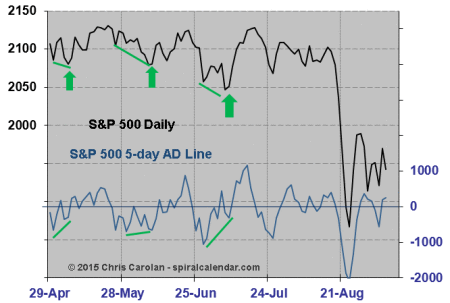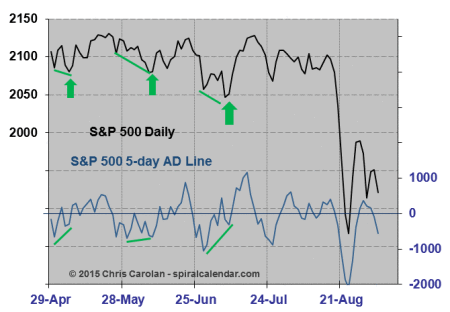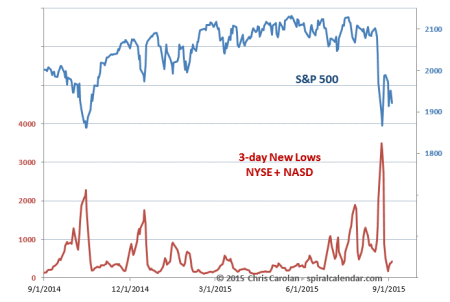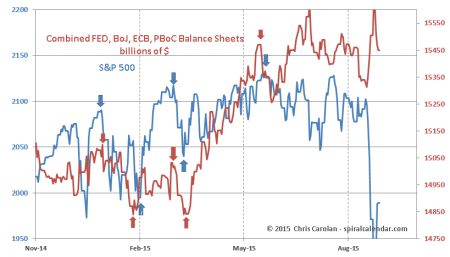Ker-Thunk
SepTumbler
An Important Number
Volatility with a Vengeance
Weekly Update
More volatility ahead, though it will likely dissipate somewhat in the short-term.
The Spiral Calendar – In from the Wilderness
Stocks Awaken from “The Great Sedation.”
Jim Grant on “The Great Sedation.”
There has been no appreciable volatility for four years. Jim Grant brilliantly labels this period, The Great Sedation. Cue the Ramones.
The Spiral Calendar links emotional market (and human) events through time. The Central Banks deployment of The Great Sedation has surpressed emotional expression in markets, and thus rendered the Spiral Calendar ineffective. During the Great Sedation, I chose to minimize Spiral Calendar discussion here, as it was clearly of limited use. I did show, through iterations of “The Money Printing Pump” how the Central Banks were guiding markets higher with low volatility through their interventions. Early this year, the correlation between these Central Bank balance sheets and market movements became extraordinarily high. Follow the May top in stocks, the correlation began to break down.
click chart to enlarge
On July 26, as I noticed the correlation between stocks and Central Banks was falling apart, I asked.
“Does this chart mean the Central Banks have lost control of the markets?”
click chart to enlarge
Now this week we have seen what happens when the Central Banks can no longer control the beast. Stocks are now nearly perfectly negatively correlated with Central Bank balance sheets in dollars.
The time has come to dust off the Spiral Calendar and bring it back as a primary forecasting tool. That will be this blogs next post, for subscribers only. You all are invited to join.




